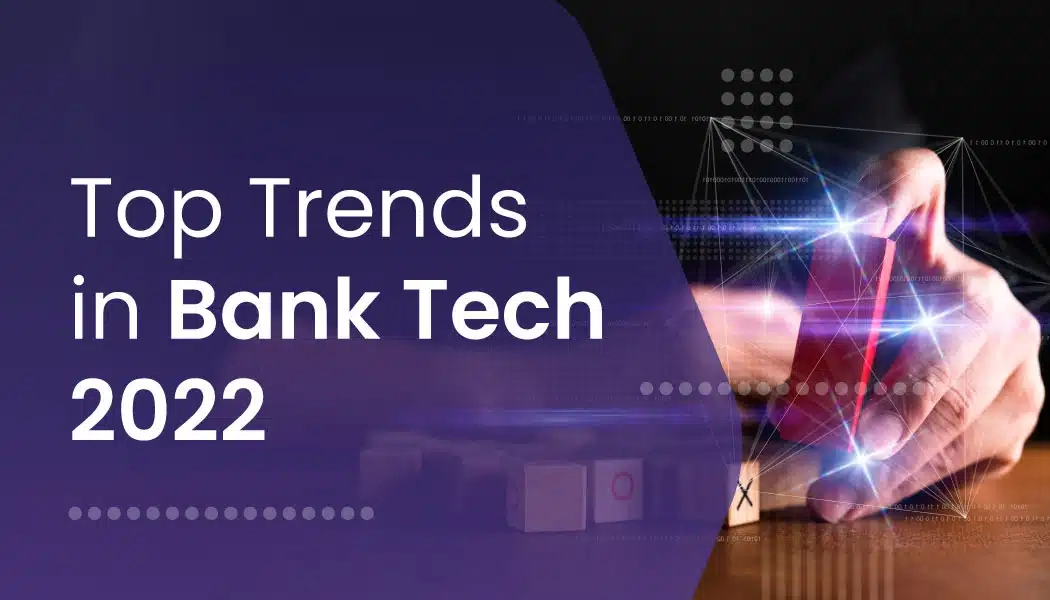Technology Shaping Banking – 2022

The year 2021 has been a challenging one for businesses and especially so for the financial services industry. It provided the long overdue impetus to modernization and digitization of the technology the banks leverage to do their daily business.
The FIs have remained largely resilient to the “post pandemic” impact and move the needle on tech initiatives alongside keeping the lights on. Remote working, customer expectations for a seamless experience online and ongoing regulatory challenges have been relentlessly highlighting the need to harness new technology to do more with less.
As we head into 2022, the following technology trends are set to continue reshaping the landscape for banks across the globe.
How are the enablers helping FIs meet their objectives?
Data Platforms & Data Fabric: As banks are aiming to get the customer-first banking right with hyper personalization and at the same time gather enough insights to remain compliant and prevent financial crime, they need effective ways of keeping the ever-growing pools of data right and relevant. As the banks think about future customer journeys, leveraging the power of customer data platforms to collect and organize data for actionable insights at the level of a customer persona first and ultimately to an individual level. FIs are exploring Data fabric to provide a holistic view of internal and external data and a unified user interface to provide timely and significant insights and modernize data integration. Data fabric is a sort of layer between data and applications, relieving banks and credit unions from the messy work of integrating individual data streams with individual applications. Gartner predicts data fabric can reduce data management costs by up to 70%.
AI/ML: Financial Institutions have been using AI/ML to automate back office processes, manage credit risk and prevent or detect fraud. While they continue to find more opportunities to get better at that, more and more banks are looking at unleashing the power of AI to elevate the customer experience. AI/ML to provide hyper personalization is increasingly being seen as a differentiator that establishes AI/ML as a core capability that would contribute to business growth.
Intelligent Process Automation: Intelligent automation trends continue to see an increase. Banks and FIs focus on standardizing automation technology across the enterprise and focus on continuously increasing security and quality while building good governance. Automated process discovery gains ground as a means to understanding existing processes and where the inefficiencies lie. Process Intelligence is another upcoming areas that can help monitor the state of a bank’s processes and point anomalies or inefficiencies to help continually adapt and stay competitive with digital-first challengers
Digital Identity: As the pandemic continued to accelerate fraud and cybersecurity issues with increase in Digital banking, the FIs continue to counter them with improved digital identity and biometrics. Adoption of new platforms with Identity as a Service and zero trust security model will be of interest. Gartner predicts that, by 2022, 40 percent of global midsize and larger organizations will use IAM capabilities delivered as software as a service (SaaS) to fulfill most of their needs.
Blockchain: U.S. banking regulators intend to clarify in 2022 what role traditional banks can legally play in the cryptocurrency market. As more and more youngsters invest in crypto, this could be the banks opportunity to jump into the cryptocurrency game. While it gets clarified what banks can engage in cryptocurrency, including holding it on their balance sheets, issuing stablecoins, holding crypto assets and facilitating crypto trading on behalf of customers etc., the big bank tech vendors – FIS, Fiserv, and Jack Henry have all partnered with NYDIG, to make mid-size institutions to integrate crypto services into their core and digital banking platforms easier. The payment networks are following suite with Visa announcing the launch of a crypto advisory service for its banking and merchant clients. Web 3.0 will take center stage in the new era.
API-fication: API first approach will dominate all delivery approaches. Banks will look to bring in standardization and governance as they scale their API delivery. API specifications will make API marketplaces internally and externally easier to adopt and improve productivity. The rise of open banking will see more interest in embedded finance and BaaS. As per Forbes, the percentage of banks and credit unions that have invested in or developed APIs has grown from 35% in 2019 to 47% in 2021—and another 25% plan to invest in or develop APIs in 2022.
Cloud Computing: As banks implement technologies like Big data and AI have high computing requirements, cloud enablement for data and applications is on the rise. In addition to providing accelerated computing, cloud initiatives are also driving cost effectiveness. Many FIs that have been working moving their legacy systems to the cloud are now considering cloud native platforms and .moving to fully cloud based environments. Gartner predicts that cloud-native platforms will serve as the foundation for more than 95% of new digital initiatives — up from less than 40% in 2021.
With enterprises gearing for growth and tackling the challenges of in an unpredictable world post pandemic times, newer models of business supported by cutting edge technologies, 2022 promises to be an interesting year!
Authored by Kulpreet Kaur




